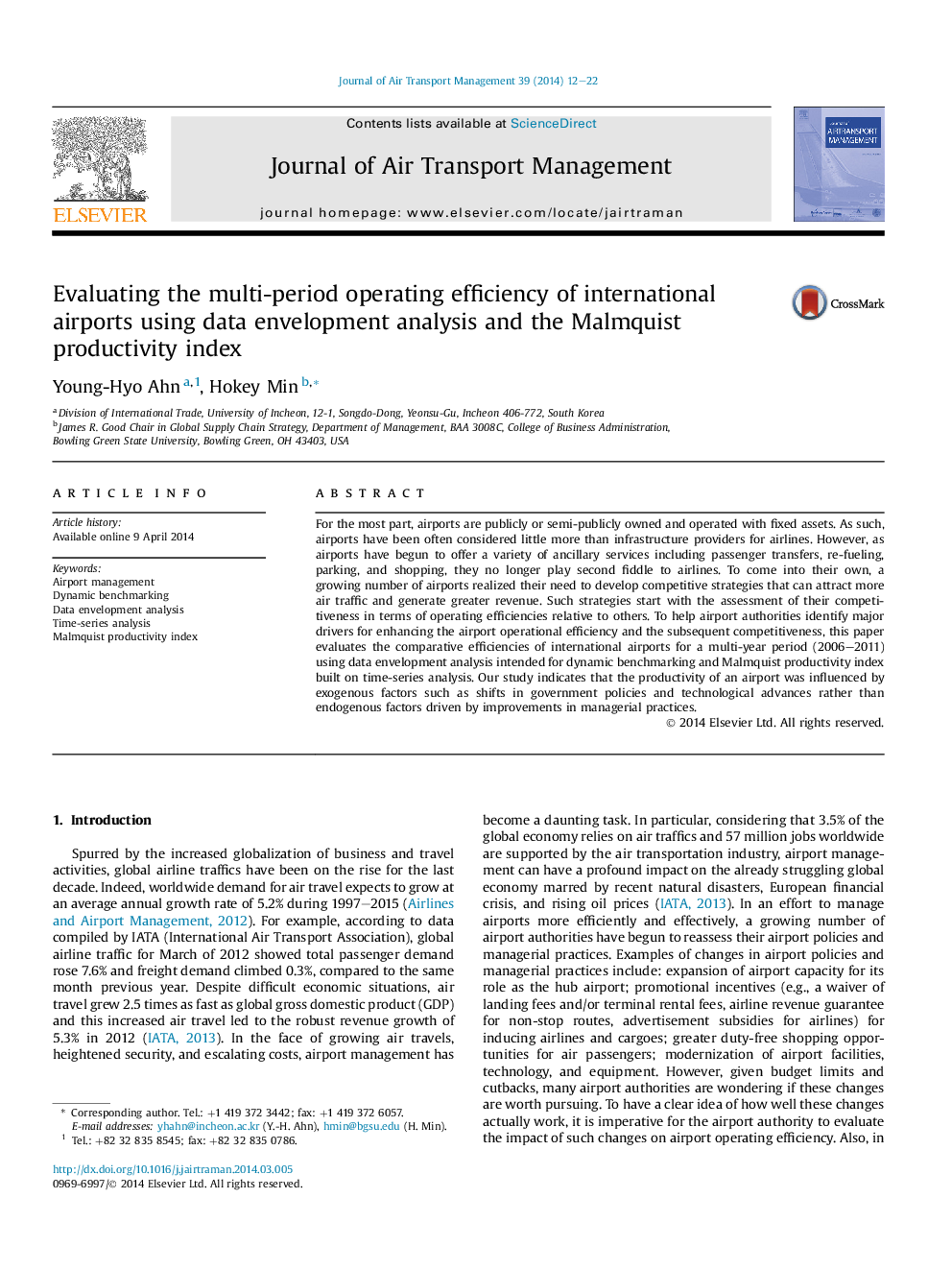| Article ID | Journal | Published Year | Pages | File Type |
|---|---|---|---|---|
| 1030838 | Journal of Air Transport Management | 2014 | 11 Pages |
•We conduct a longitudinal study of airport efficiency over time.•We identify the sources of airport efficiency and inefficiency.•We develop multiple data envelopment analysis models to measure airport efficiency.•Airport efficiency is not necessarily driven by managerial innovation.•Airport efficiency is influenced by external factors such as government policy shifts.
For the most part, airports are publicly or semi-publicly owned and operated with fixed assets. As such, airports have been often considered little more than infrastructure providers for airlines. However, as airports have begun to offer a variety of ancillary services including passenger transfers, re-fueling, parking, and shopping, they no longer play second fiddle to airlines. To come into their own, a growing number of airports realized their need to develop competitive strategies that can attract more air traffic and generate greater revenue. Such strategies start with the assessment of their competitiveness in terms of operating efficiencies relative to others. To help airport authorities identify major drivers for enhancing the airport operational efficiency and the subsequent competitiveness, this paper evaluates the comparative efficiencies of international airports for a multi-year period (2006–2011) using data envelopment analysis intended for dynamic benchmarking and Malmquist productivity index built on time-series analysis. Our study indicates that the productivity of an airport was influenced by exogenous factors such as shifts in government policies and technological advances rather than endogenous factors driven by improvements in managerial practices.
